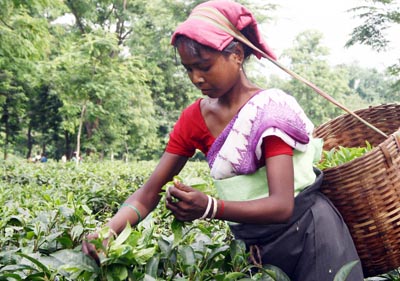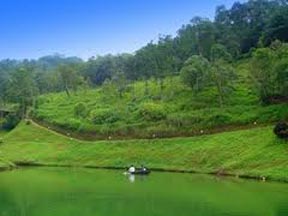Exploring Tea Estates in India
Tourist industry is on the rise now due to easy connectivity between towns, cities and even countries. Life as it has just turned into a high speed expressway for many, a result of globalization and high incomes in certain groups of people. This has led to increase in expectations of people with respect to services they receive, entertainment et. al. One such sector that has not remained unaffected is naturally, the tourism industry. Now for the people who belong to the jet-set generation are not satisfied by merely visiting new places and simply viewing the nature and various attractions of that place. Now people are more inclined to absorb more of the local culture and to literally, live the experience, feel for themselves. This has given way to a lot of innovative packages and different kinds of specialty tours. These tours are based on a theme that revolves around a single concept which is normally a product that is indigenous or specialized product of a particular region.
One such theme is the 'tea' - all good Indians wake up daily to a refreshing cup of 'chai'. Who doesn't welcome a cup of 'elaichi chai' or 'adrakwali chai' on a cold winter morning or on a rainy monsoon day? There will hardly be a person who does not like to drink tea and in most Indian households
guests are welcomed with a cup of tea. It is no wonder then that a big industry is developing in India around the theme of tea tourism. And India being one of the largest producers of tea in the world has proved to be a big boost to the industry. Many tea estates have also now designed their own packages for tourists to experience the refreshing 'tea' experience - right from plucking the leaves to drying and curling them and finally drinking the fresh brew - the experience is enthralling and invigorating.
The trail starts from Assam, the birthplace of Indian tea or most famously known in the world as the Assam Tea, to high elevation estates of Darjeeling at the foothills of Himalayas, to the tropical tea estates in the Nilgiris of south India. Now even Uttaranchal, Himachal Pradesh and Orissa have their own share of tea estates. Each tea estate has its own unique flavour and character making them potential tourist spots. So make a beeline for one or more of these tea estates and brew in the simple pleasures of life!
Assam
 For almost all of us Assam is linked in our minds to the much-favoured beverage, the leafy concoction that most of us cannot do without. The sights and sounds of an Assam tea estate are of a different kind, different from the noises that confront tourist elsewhere in India. There are around 800 large tea estates most of which were established by the British - truly magical destinations complete with old heritage bungalows. You can stay in one of these bungalows to get the feel of the old-world charm. These bungalows have been turned into luxury resorts by the tea planters. One such bungalow where you can stay is the Mancotta Chang Bungalow, a 157-year-old beautifully restored bungalow situated in the middle of a working tea estate. An additional reward of staying in these bungalows is that it also serves as a base for trips to the World War II sites, the Oil Museum in Digboi, Ahom Kings' monuments in Sibsagar, Rukmini Island resort and the Dibru-Saikhowa National Park to see wild horses, besides other animals and birds. An interesting historical route is the remains of the Stillwell Road bult by US General Joseph Stillwell built during WW II to connect to Ledo in Assam with Mynamar. Built under extremely difficult conditions give you a little insight on the hardships faced by the soldiers during the war.
For almost all of us Assam is linked in our minds to the much-favoured beverage, the leafy concoction that most of us cannot do without. The sights and sounds of an Assam tea estate are of a different kind, different from the noises that confront tourist elsewhere in India. There are around 800 large tea estates most of which were established by the British - truly magical destinations complete with old heritage bungalows. You can stay in one of these bungalows to get the feel of the old-world charm. These bungalows have been turned into luxury resorts by the tea planters. One such bungalow where you can stay is the Mancotta Chang Bungalow, a 157-year-old beautifully restored bungalow situated in the middle of a working tea estate. An additional reward of staying in these bungalows is that it also serves as a base for trips to the World War II sites, the Oil Museum in Digboi, Ahom Kings' monuments in Sibsagar, Rukmini Island resort and the Dibru-Saikhowa National Park to see wild horses, besides other animals and birds. An interesting historical route is the remains of the Stillwell Road bult by US General Joseph Stillwell built during WW II to connect to Ledo in Assam with Mynamar. Built under extremely difficult conditions give you a little insight on the hardships faced by the soldiers during the war.
Other than Mancotta, you could also choose to stay in the Thengal manorin Jalukoni village, a little outside Jorhat towan. Other noteworthy places to stay at are Gatoonga Tea Estate and Sansua Tea estate in Jorhat. You could also head to the Marangi, Mokalbari and Sibsagar estates on the trail. Living in these tea estates can enable the tourists to re-live the British Raj era, play a round of golf, tour the gardens and the factory to see how the leaves are plucked and processed into tea leaves as we know, and enjoy the freshly brewed cup the next morning.
Added charm is that you can make your way to the basti in which the tea estate workers live and get an insight on the way they live. Nothing can beat the sheer joy of watching their vibrantly graceful Jhumur dance. You can also plan your visit to coincide with the Bihu festival and watch some colourful local games and other activities.
Also, while in Assam, one can also visit the Kaziranga National Park and Manas National Park, both of which are now World Heritage Sites. While Kaziranga houses the one-horned rhinoceros, Manas is a Project Tiger Reserve, an Elephant Reserve and also a Biosphere Reserve. Manas is also famous for the rare and endangered Assam roofed Turtle, Hispid Hare, Pygmy Hogs and the Golden Langurs, all of which are endemic to Assam.
Darjeeling
Darjeeling - the dreamland of the East has been a very popular hill station since the British period. Tea is grown in Darjeeling at altitudes ranging from 600 to 2000 metres. This place has some of the most beautiful tea estates in the country and many of those elicit the same respect and recognition as the top vineyards in France. In Darjeeling, the companies that have opened their estates to the tourists are the famous Makaibari Tea Estate, the picturesque Glenburn Tea Estate and Phaskowa Tea Estate in Jalpaiguri.
The northern district of West bengal which includes the hills of Darjeeling is home to exotic tea locales in the hilly regions of India. One such garden is
Other tea estates in Darjeeling worth visit are Gopaldhara, Castelton, Steinthal, Goomti, Longview and Ambootia among others.
Also while in Darjeeling do not miss the sight of quaint yet cute, Darjeeling Himalayan Railway, which is now a UNESCO World Heritage Site. Other places that one should definitely visit in Darjeeling are Lloyd's Botanical Garden and the Padmaja Naidu Himalayan Zoological Park.
Nilgiri Mountains
The mountains bordering the southern states of Tamil Nadu, Karnataka and Kerala, are called Nilgiris or the Blue Mountains - a veritable fairyland. The Nilgiris provide an opportunity of viewing beautiful tea gardens on steep hill slopes, besides producing one of the finest teas in the country. Tea is the most important industry in this region. Combining its original Chinese and Assam seedlings with extensive new plantations of premium clones, this estate makes bright full-flavoured teas with wonderful colour and fragrance.
Hugging the misty undulations of the 'Blue Mountains', at altitudes of 5000 to 6000 feet, the densely packed plantations of Havukal estate nurture premium clones, producing the finest high grown teas in South India. This family-owned tea estate shares the same valley as the Kairbetta, its neighbour on slightlyhigher slopes. The lush 137-hectare plantations of Kairbetta climb from 5500 to 6600 feet over Nilgiris' steep mountainsides.
The Nilgiris are also home to some of the famous and most breathtaking hill stations, one being the famous Udhagmandalam or as is commonly known as Ooty - resplendant with clouds that kiss the skies, dense, lush green forests and beautiful valleys and glades. There are various festivals that are celebrated in Ooty including the Tea and Tourism Festival which is normally in January, so you can plan your visit to the Nilgiris around this time. Another festival to look for is the Boat Races and Boat Pageantry and the Flower Show in May.

Munnar
Munnar, the enchanting tea garden hill station in Kerala, is full of tea estates and has thick forest cover which spellbinds the traveller. While in Munnar, the must-go for all tourists is the Tea Museum at the Nallathanni Tea Estate which is opened by Tata Tea. In the museum, there is a special demonstration room where one can actually taste teas of several different varieties. There is also an opportunity to learn about the orthodox CTC manufacturing process in the tea manufacturing unit at the museum. The museum also has an extensive colletion of various machineries, photographs and a number of curios that are related to tea manufacturing and each of this depicts some or the other turning point in the tea industry, thanks to which the industry is now flourishing.

Besides the tea estates, Munnar is a very popular and a favorite hill station frequented by honeymooners and families alike. Munnar also has a big spice industry that produces cardamom, nutmeg, cinnamon, turmeric, ginger, vanilla, coffee, and cloves. So one can visit one of the spice gardens in Munnar and take a peek into how these spices are grown.
Wayanad

Wayanad lies in the north-east of Kerala on the altitudes from 700 to 2100 metres high on the western ghats. Wayanad offers a breathtaking range of waterfalls, lake, dam, rocks and caves, a wildlife sanctuary and Muthanga forest in addition to its lush ranes of tea gardens. Tea Garden Resorts at Vythiri is an enchanting place to stay in the midst of a tea plantation. Its a veritable paradise for nature lovers and for those who love trekking.
Another beautiful tea estate is the Priyadarshini Tea Estate located at Mananthavady, which is mainly aimed at the tribal rehabilitation by the government of Kerala. This region has several beautiful places worth exploring such as Pookot lake, Thirunelly Temple, Muthanga Wildlife Sanctuary, Valliyoorkavu temple, and Tholpetty Wildlife Sanctuary.
So if you have had enough of the regular and commonly arranges tours that include only a series of sightseeing expeditions and are looking fro something more, something that will soothe your mind and soul, give you memories of a lifetime and to find a place that you can really go back to again and again, then I am sure you will find that place in one of these enchantingly beautiful tea estates! So go for it and find that ultimate cup of tea for your mind and soul!
Like it on Facebook, Tweet it or share this article on other bookmarking websites.

